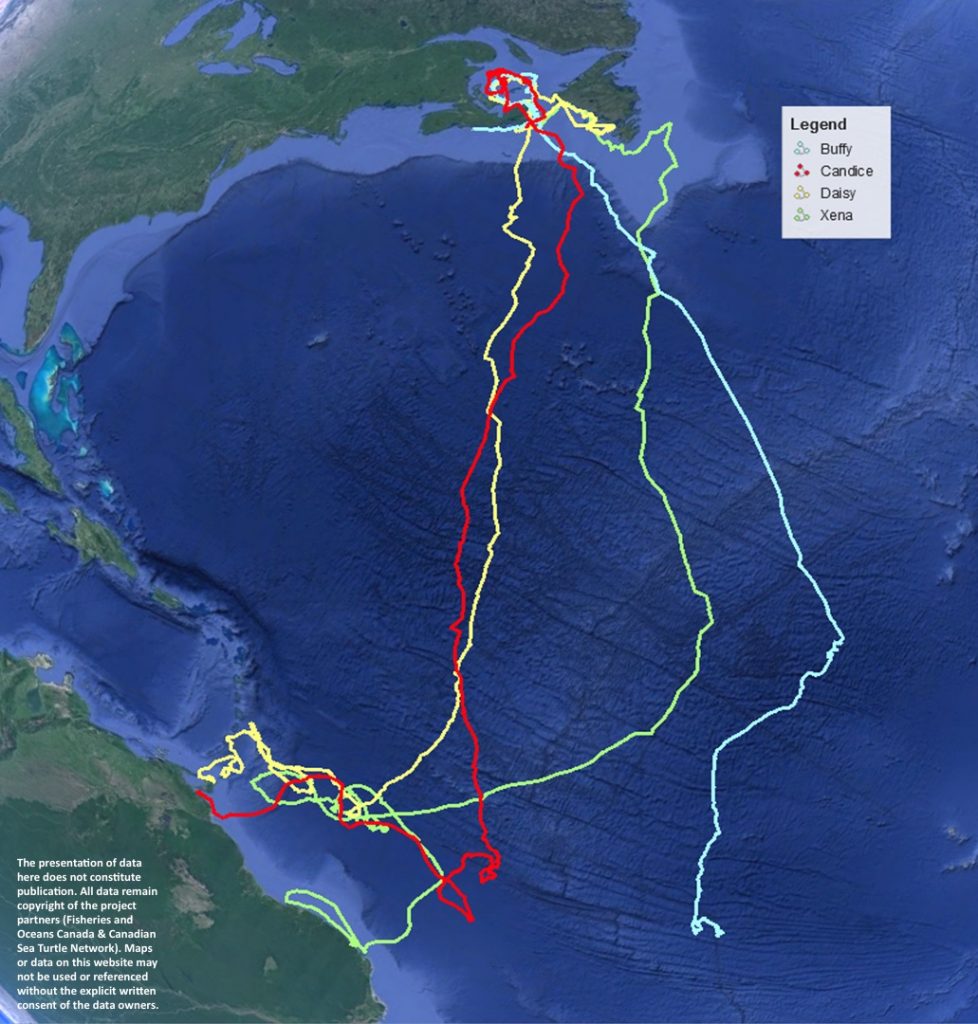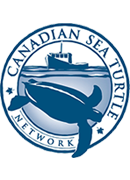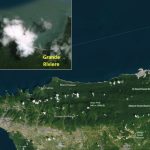
We are following the movements of four satellite-tagged leatherbacks right now. Since we are thinking a lot about Trinidad these days as we prepare for our 2019 CSTN Field Trip to Trinidad this May, I thought you’d want to take a closer look at two of the turtle tracks: Buffy’s (yellow), and Candice’s (red).
Both animals were tagged as part of a collaborative project with the CSTN and Fisheries and Oceans Canada (DFO). When we encountered Buffy last summer off Nova Scotia, she already had flipper tags indicating that she was a Trinidad nester. This spring, Buffy has returned to the north coast of Trinidad to nest.
In August 2013, we worked with Candice off the coast of Nova Scotia. We used flipper tags to mark her as a “Canadian” turtle at that time. And as luck would have it, our good friends and collaborators at Nature Seekers in Trinidad (we will be staying and working with them on the Field Trip) found Candice nesting on Matura Beach exactly a year ago. At that time, Nature Seekers equipped her with a satellite tag as part of a project they are doing with DFO. Candice swam all the way back to Canadian waters in summer 2018. She did a full tour of the Scotian Shelf and the Gulf of St. Lawrence before heading south again. (We haven’t included her track from Trinidad to Canada on these maps—just her trip back south again.)
The yellow track below is Buffy. The red track is where Candice is now.

Candice nested on the east coast of Trinidad last year. She’s swimming so close to shore at this time that it looks as though she might nest again. This might not seem like a big deal, except that leatherbacks don’t usually nest every year. In fact, less than 2% of them typically do. So it is scientifically unlikely that Candice will nest. But…we can’t figure out what she’s doing so close to her nesting beach at this time of year otherwise.
We once followed the track of a leatherback we called Beverley. (You can read more about her here and here and here.) She is one of my favourite leatherbacks because instead of going south when she was “supposed” to, she went east. I have a soft spot for the leatherbacks that defy convention.
One of the fishermen who captained our field boat for many years once told me that the thing he liked most about leatherbacks was how different each one was. That you could see dozens of them and no two looked quite the same. I think about how important this is—that as humans we remember animals are individuals, each with their own thoughts and experiences. Their own journeys. Like us.


Thanks for sharing Kathleen! Although I don’t currently have the opportunity to work with turtles in my (very young) Marine Biology career, I love to read about what they’re up to 🙂
Thanks for writing! I’m glad you are enjoying reading about the turtles. I never get tired of seeing where each one goes and how they get there.
Thank you for sharing the adventures of these Trinidadian-born turtles.
Thanks for reading! We love following the paths of the turtles from Canada back to their nesting beaches.